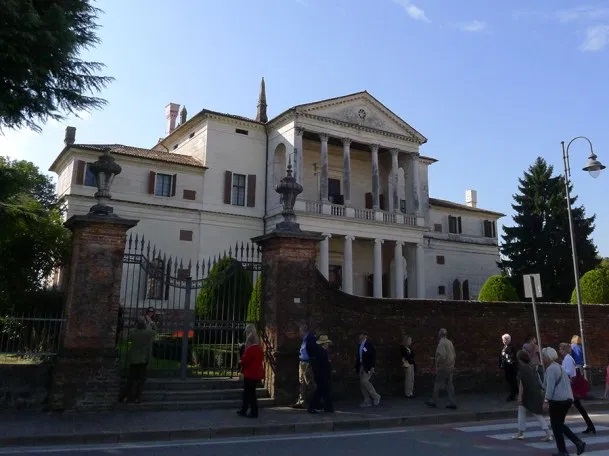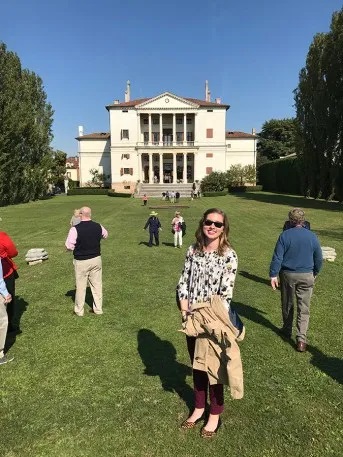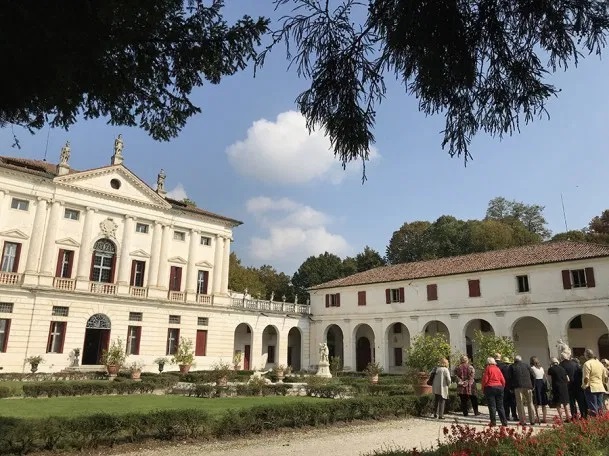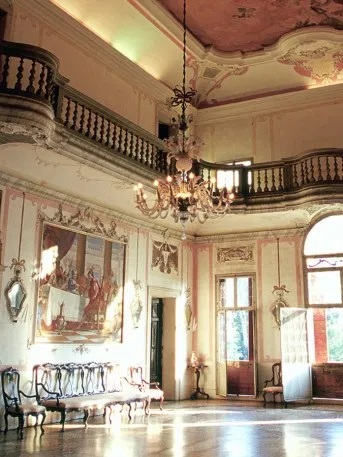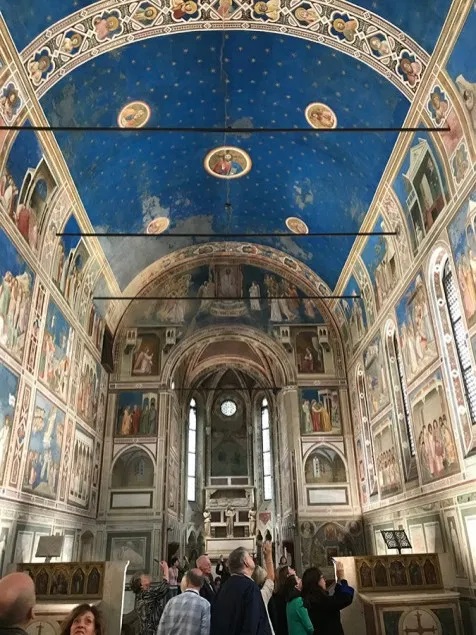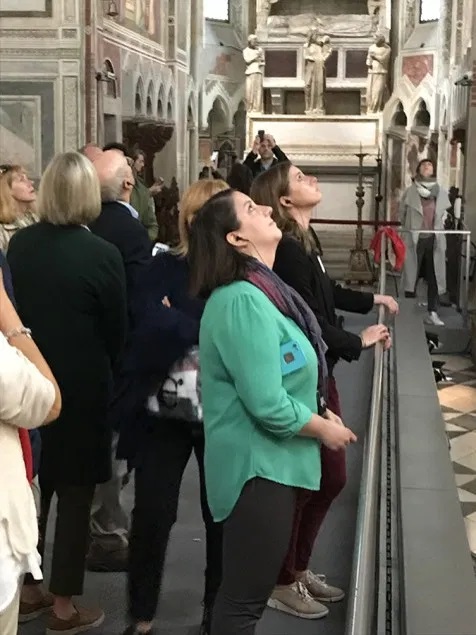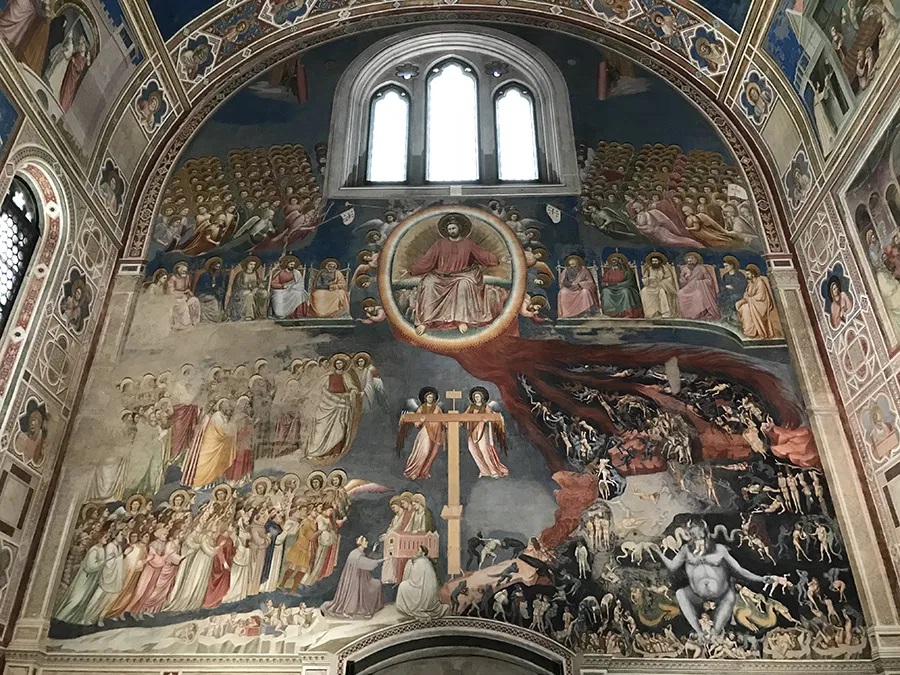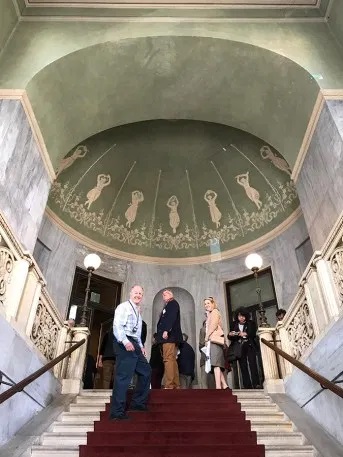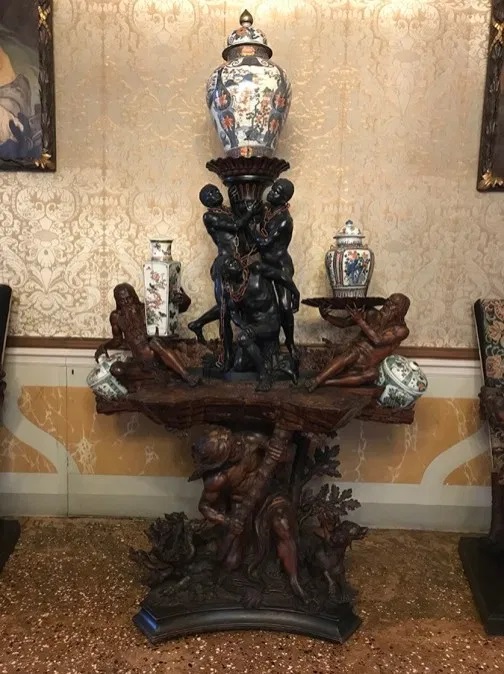Exploring Venice and the Veneto
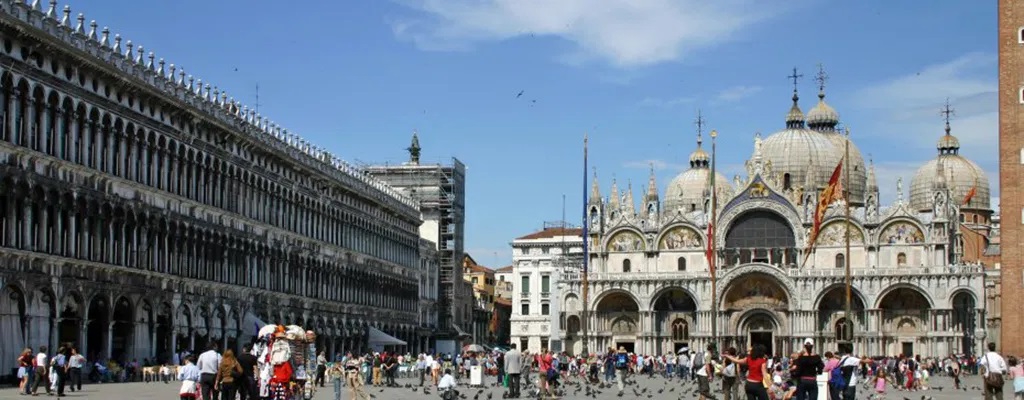
The Decorative Arts Trust’s fall 2018 Study Trip Abroad provided a superb exploration of the Veneto and Venice. Centered in Asolo, Verona, and Venice, the 8-day program highlighted renowned figures of Italian cultural history, including Palladio, Canova, and Casanova. A handful of locations are highlighted below to offer a sense of the splendor and variety we encountered on tour. As with all of our international expeditions, visits to sites of architectural and artistic significance were paired with opportunities to appreciate local cuisine and viniculture!
The villas and churches designed by the great 16th-century architect Andrea Palladio will be described in greater depth in our year-end issue of the The Magazine of the Decorative Arts Trust, but our participants were fortunate to encounter a half-dozen structures linked to this supremely talented classicist. Anyone who has toured 18th-century country houses in Britain will be readily familiar with the eponymous Palladian style that was the rage among segments of the aristocracy. The chance to see Palladio’s work in the flesh, however, was truly enlightening.
Our highlight on the Palladio front, and perhaps the tour at large, was a visit to Villa Cornaro in Piombino Dese. We were the last group to be welcomed by the house’s outgoing owners, Sally and Carl Gable of Atlanta, GA, who recently sold Villa Cornaro after decades of dedicated stewardship. If you are curious about the trials and rewards of owning a 16th-century Italian country house, we highly recommend Mrs. Gable’s Palladian Days: Finding a New Life in a Venetian Country House (New York: Alfred A. Knopf, 2005).
The design of this house’s façade is considered the antecedent for colonial American projects, from Thomas Jefferson’s initial version of Monticello to Drayton Hall in Charleston, SC. Trish Smith, Drayton Hall’s Curator of Historic Architectural Resources, accompanied the group as a scholarship recipient, and we were delighted to stage her introduction to Palladio’s work at Villa Cornaro. We discovered that many Palladian interior architectural principles were lost in translation in America. John Drayton, for instance, copied Villa Cornaro’s double portico on the facade of his plantation house and left it at that.
A visit to the nearby Cà Marcello provided an important 18th-century comparison to Palladio’s oeuvre. Hosted by the debonair Count Jacopo Marcello, who balances his time overseeing the villa and estate with a second career as a sailboat captain, the house illustrates the manipulation of a Venetian-style palazzo for a rural setting. Displaying the utilitarian purposes of storage, commerce, and work spaces blended with domestic uses, Italian villas functioned as a consolidated center of operations, unlike the English and American preference to isolate farm and husbandry tasks in more distant outbuildings.
Cà Marcello retains a superb collection of 18th- and early-19th-century decorative arts to contextualize the family quarters and entertaining spaces, particularly the grand two-story ballroom. Count Jacopo demonstrated the engineering of the broad, historic terrazzo floor by jumping up and down at its center, thereby permitting us to feel the vibrations of this floating, malleable surface of marble chips set in clay. The handsome and extensive suite of Venetian seating furniture on display suggest the fetes hosted in this impressive salon. Providing a sense of the estate’s former grandeur, remnants of the extensive gardens replete with ornamental ponds can still be found immediately behind the house.
Possagno is the hometown of Antonio Canova, perhaps the most influential Italian sculptor of the late 18th and early 19th centuries. At the Canova Museum, we encountered the familiar visage of George Washington, an unlikely meeting in the foothills of the Dolomites! The Canova connection comes through a commission from the North Carolina General Assembly, who ordered a monumental statue of a toga-clad Washington at Jefferson’s suggestion for the rotunda of the to-be-renovated State House. Arriving to great fanfare in 1821, Canova’s carving met a tragic end only ten years later when the State House was gutted by fire. Thankfully, the sculptor’s plaster model survives in the Veneto.
In Padua, we were treated to a 30-minute “double visit” to the extraordinary Scrovegni Chapel. Completed in 1303, this diminutive structure contains a glorious cycle of frescoes by the renowned Florentine artist Giotto, regarded as the father of Western art. The chapel’s patron, Enrico Scrovegni, was eager to offer an important tribute to the Virgin Mary after Dante cast Scrovegni’s father to a life of eternal damnation as a usurer in the Divine Comdedy.
Enrico’s efforts were rewarded through Giotto’s illustrations of the lives of Mary and Christ as well as the Last Judgment, which were executed with his revolutionary artistic approach to the sense of space, naturalism, and drama that influenced the development of European art. Liz Simmons, a PhD student in art history at the University of Delaware and our second scholarship recipient, was ecstatic to see this iconic site in person.
Shifting from the sacred to the profane, another important monument in Padua is the Caffé Pedrocchi. Opened in 1831, this establishment has served as fixture of the city’s university and intellectual communities for nearly 200 years, and was hosting numerous graduation celebrations on the day of our visit. The café’s rooms represent an encyclopedia of the revivalist aesthetic that defines the 19th century, ranging from Moorish to Egyptian to Greek to Pompeian. With the original light fixtures, wall decoration, and many furnishings extant, the complexity and playfulness of the interior design are a sight to behold, all encased behind a handsome Greek temple façade.
Cà Rezzonico is a must-see in Venice for the lover of decorative arts. Begun in the 1660s, the impressive palace was sold unfinished in 1712 to the Rezzonicos, a wealthy banking family, and finally fit for an inaugural banquet in 1758. Referred to as the museum of 18th-century Venice, the setting evokes the aristocratic circles Casanova idolized. The entire site is splendid, from the beautiful marble exterior to the richly ornamented interior bedecked in frescoes.
The true show stopper, however, is an astounding selection of furniture by the Venetian master carver Andrea Brustolon. His highly charged and exoticized works depict illustrations of Moors, some in chains, and are worthy of a lengthy discourse in their own right. A suite of armchairs in this vein are covered in beautifully preserved embroidery, representing a powerful contrast to the carved frame. For the purposes of this brief recap, however, you will simply need plan a lengthy visit to the museum during your next sojourn in Venice!
About The Decorative Arts Trust Bulletin
Formerly known as the "blog,” the Bulletin features new research and scholarship, travelogues, book reviews, and museum and gallery exhibitions. The Bulletin complements The Magazine of the Decorative Arts Trust, our biannual members publication.








